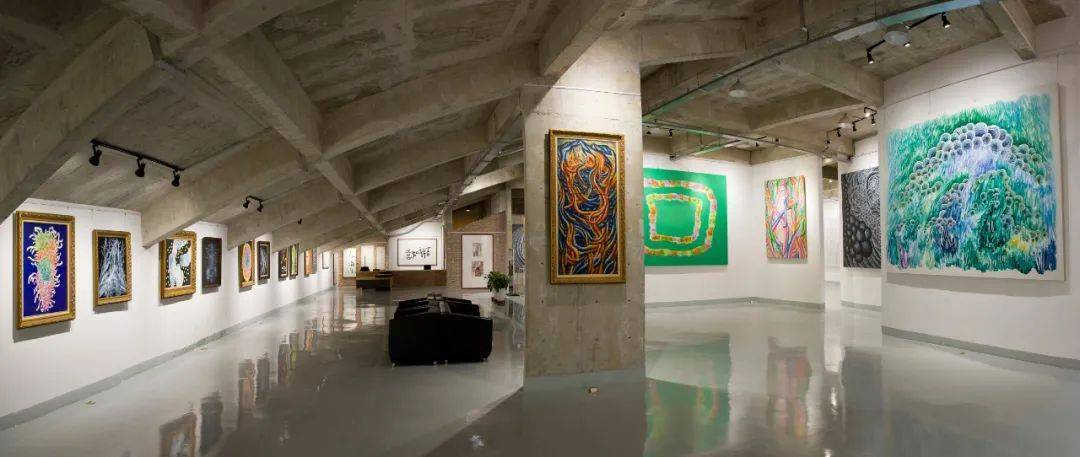

《申伟光重字书书法作品集》
作 者:申伟光
责任编辑:林郁郁
特约编辑:申 思
出版发行:新华出版社
经 销:新华书店
成品尺寸:205mmx 285mm 16开
版 次:2023年10月第一版
书 号:ISBN 978-7-5166-7200-6
定 价:260.00元
实拍书影


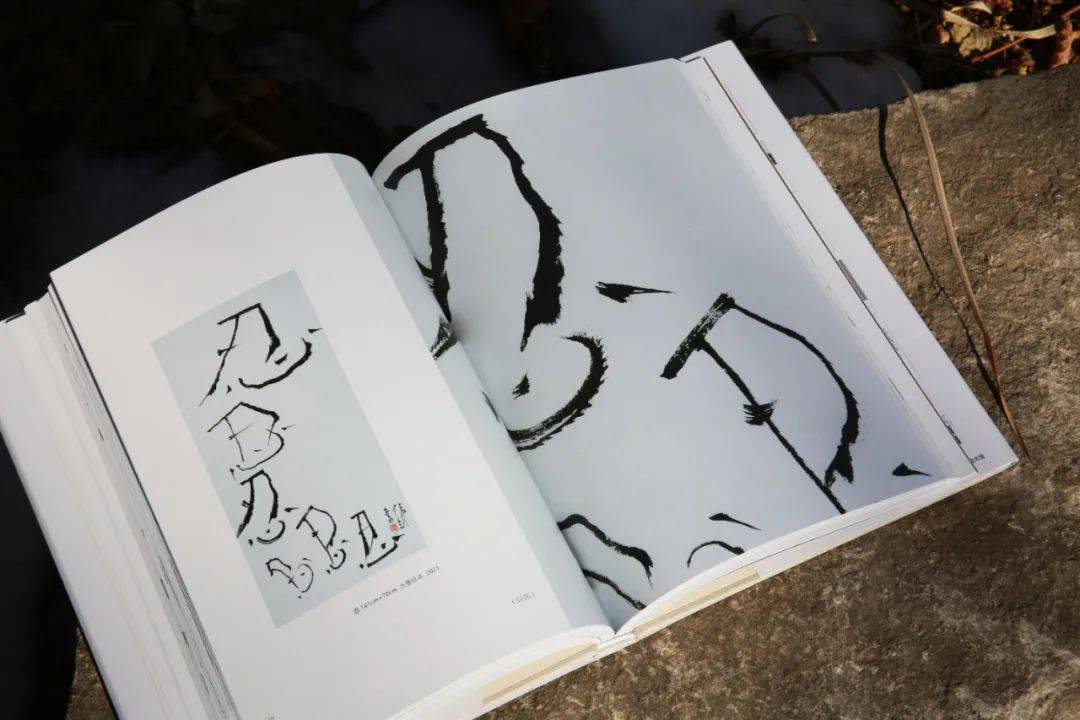


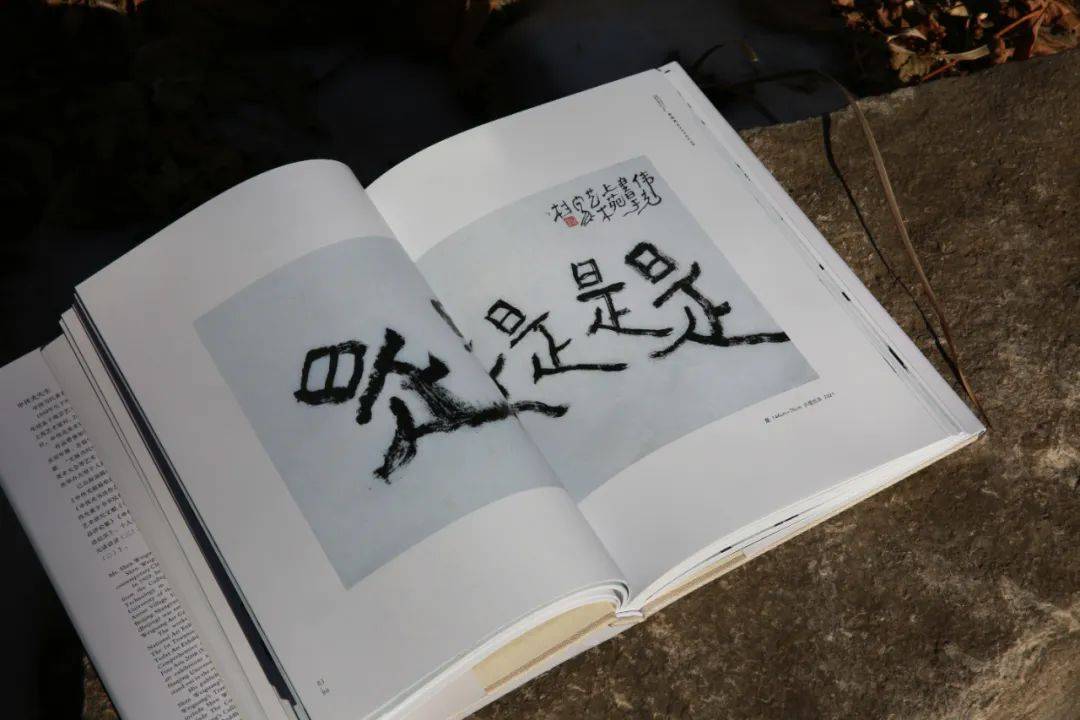

——谈谈申伟光的书写
文/陈孝信
说到我和申伟光先生、申思,还有申明辉(祖孙三代)之间的关系,我肯定是老资格。申伟光,他从一个真性情的艺术家,北方的大汉子,到成为中国当代最杰出的艺术家之一,到九十年代以后变成了一个虔诚的佛家弟子、居士画家,这个过程我是见证者。之后我又见证了申思从小长到大的成长,我最早见到申思的时候,他才三四岁,后来长大成人,结婚生子,继承他父亲的这个事业,尤其这次要了解“重字书”,我特地读了申思写的《申伟光先生“重字书”巡回展前言》,我感觉到申伟光终于有了接钵人了,我倍感欣喜。最后我又见证了申明辉的长大,从抱在怀里,一直到现在十六岁,他现在也是申伟光美术馆的工作人员,也在做伟光的事业。我能见证这三代人的成长与变化,我已经感到很幸运了,这确实是一个非常深厚的友谊。对于伟光的事业,作为一个老朋友来讲,我是非常的理解,并且尽我所能全力去支持他,这个是没有疑问的!所以今天申思请我来为本书写一个序言,我当仁不让。

真 180cm×97cm 水墨纸本 2023
一申伟光的书写是一种特殊意义上的精神性的行为艺术。它分为了两大类:
一、宗教意义上的写经行为:
整篇或整部经书、经文的抄写、或反复抄写,有的篇幅巨大、字数浩瀚、且非一年半载之功,长年累月地耗力、耗气、耗心、耗血;有的甚至直接就是蘸自己的鲜血来书写,愿力超凡,感天动地!
这一部分宗教意义上的书写,其所体现出的宗教性、神圣性、庄严性、纯粹性、仪式性是第一位的;而书写的艺术性是其次的,且一般都是以正楷或楷、隶交融来完成,排列严整,具有了一定的观赏性和心身上的冲击力。
二、另一大部分则是相对世俗意义上的书写,其内容涉及历代诗歌、俚语、警句、格言、箴言等等。这些被书写的文字,往往易于辨认,且具有了精神上的悲悯和劝诫、济世性的人文情怀(宗教性内涵已相对减弱)。同时,书写的艺术性则得到了强化和突出,因而具有了书法艺术及史学的价值。值得今人和后人深入研究。
我口占一首打油诗以飨诸位:
佛心化书艺,日日修行功;
笔落悲悯生,书象意趣浓;
细瘦歪斜转,法在无法中;
衰年思前贤,禅书一脉通。

灯 145cm×76cm 水墨纸本 2022
特别需要强调的是:
(1)书象的存在:点划有象,结体有象,结构有象,其中常常暗藏禅机,往往意趣横生。这也是我把他的书法作品归入“禅书”的主要依据之一。申伟光自己也说他走的这条路应该也是画家的路子,“你看我的书法,也会感到很多的象形意味,这就是形象思维,我把它发展了,让它更加夸张,让这个意象和象形更加强烈。”(参见《申伟光谈话录》,p132)古代的书法大家也有强调“书象”的,例如苏东坡、黄庭坚、郑板桥,还有近现代的弘一、丰子恺等等。申伟光的做法是把它进一步丰富、拓延并夸张了,构成了他自己书法的一个显著特点。这也可以归入书法形态学意义上的一个突破。
(2)反常规的用笔,变化多端,不拘体式,独具一格。既融通了楷、行、隶、篆四体,也融通了帖学与碑学。他自己给学生有过这样的交代:有些字的用笔,写得非常有力量,有内涵,让人感觉到一种庄重感和静穆感,甚至还有一种永恒感;而有些字,写得非常灵巧,让你感觉非常优美,很轻松、不执着,但又不是简单的轻松,它里面蕴含了很多东西;还有些字,写得很稚气,很童真,很率直,但里面有很多值得玩味的东西(同上引,p127)。以上三种,大致概括了他的用笔特色。除了这些,更为重要且关键的是用笔的态度。他认为:通过写这个书法的线条,你可以体会到更多生命本质的东西。你所有的精气神,都在笔端。(同上引,p192—193)他还进一步强调:你如果把金刚菩提心那种感受,通过书法的线条传达出来的话……那笔道一下来,就感觉是天地之间的一种力量!(同上引,p193)我在他的个别作品中(如“慈悲”“真”等),所感受到的正是这样一种力量!
(3)超功利的心态与超功利的书写相互拥有、相互结合,具有了满满的济世情怀。
注:禅书一路我想到的是八大、弘一和丰子恺(应该还有很多)。他们的书法都别具一格,非普通书法家可比。
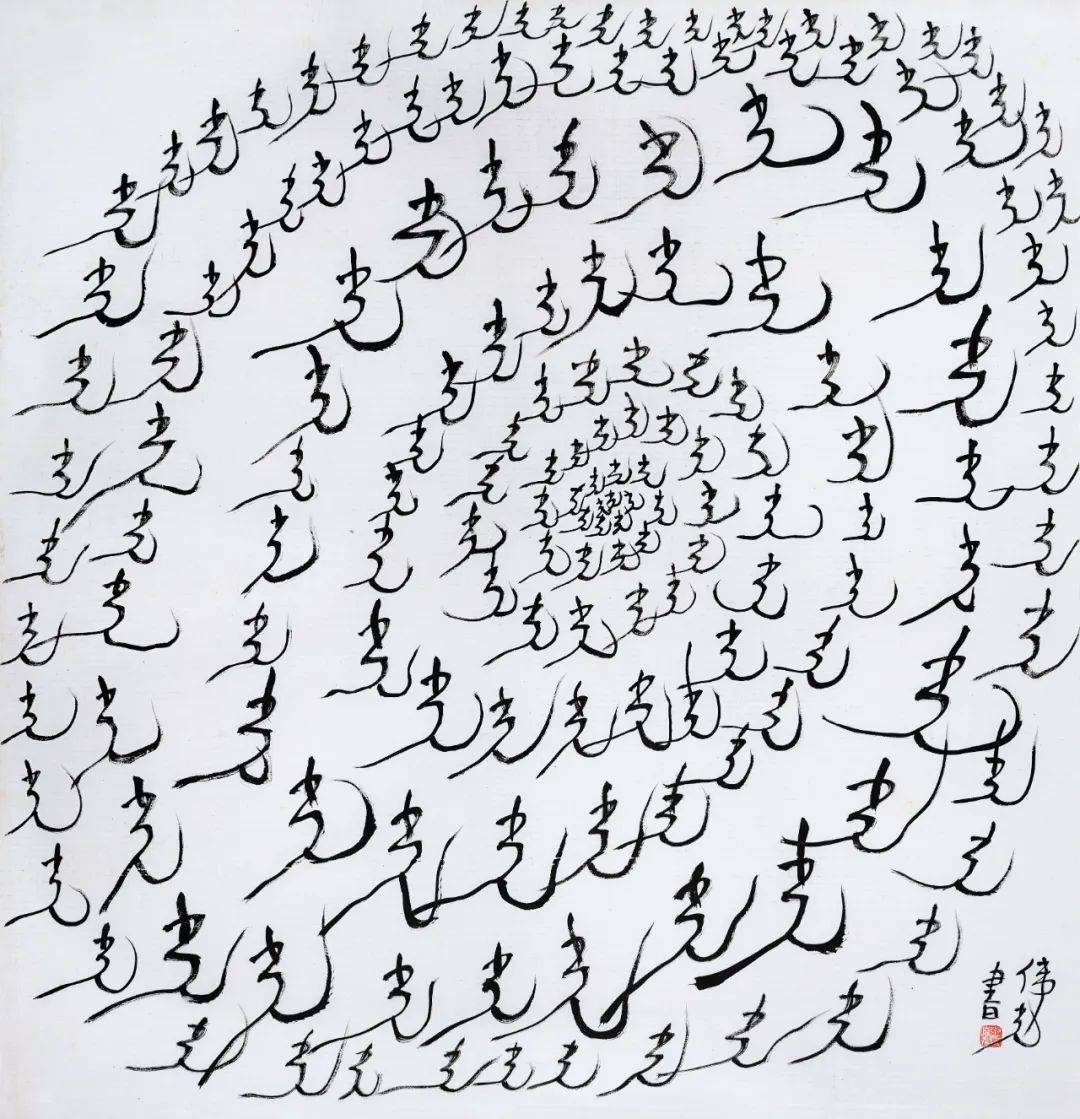
光 102.5cm×100cm 水墨纸本 2021
二“重字书”之“本”,重的是“道”。即为何要书写,书写的终极意义又在哪里?只有立下了这个“本”,体现了这个“道”,才能来谈他在艺术语言方面的“独特”,而申伟光这些独特的艺术语言,就是依托于“本”,附立于“道”的,这个在申伟光的艺术里就是“艺道一体”“书人一体”!
“书道一体”或“书人一体”,正是书写的最高境界,莫过于此!申伟光的艺术做到了“艺道一体”“书道一体”“书人一体”!为什么这样说?因为申伟光自己心心念念的是“众生无边誓愿度”“加强精神的能量”“艺术是整个生命的体现”,申伟光强调书写当中的“自性”“空性”和“佛性”等等,这些书法都是在说“书之道”“书之本”。所以说“重字书”,乃至于申伟光的其他书写,都是突破了传统书法意义上的一种“新书写”,因此,站在传统的书法角度来讨论申伟光的“新书写”,就难免会不得要领。
作为一种新方式的“重字”的书写,他源于重诵(净土宗修行的不二法门),我现在天天也在念“南无阿弥陀佛”,每天都要念上一段时间,这就是“重诵”,反复地念。所以,申伟光的“重字书”,源于重诵,成于书写。
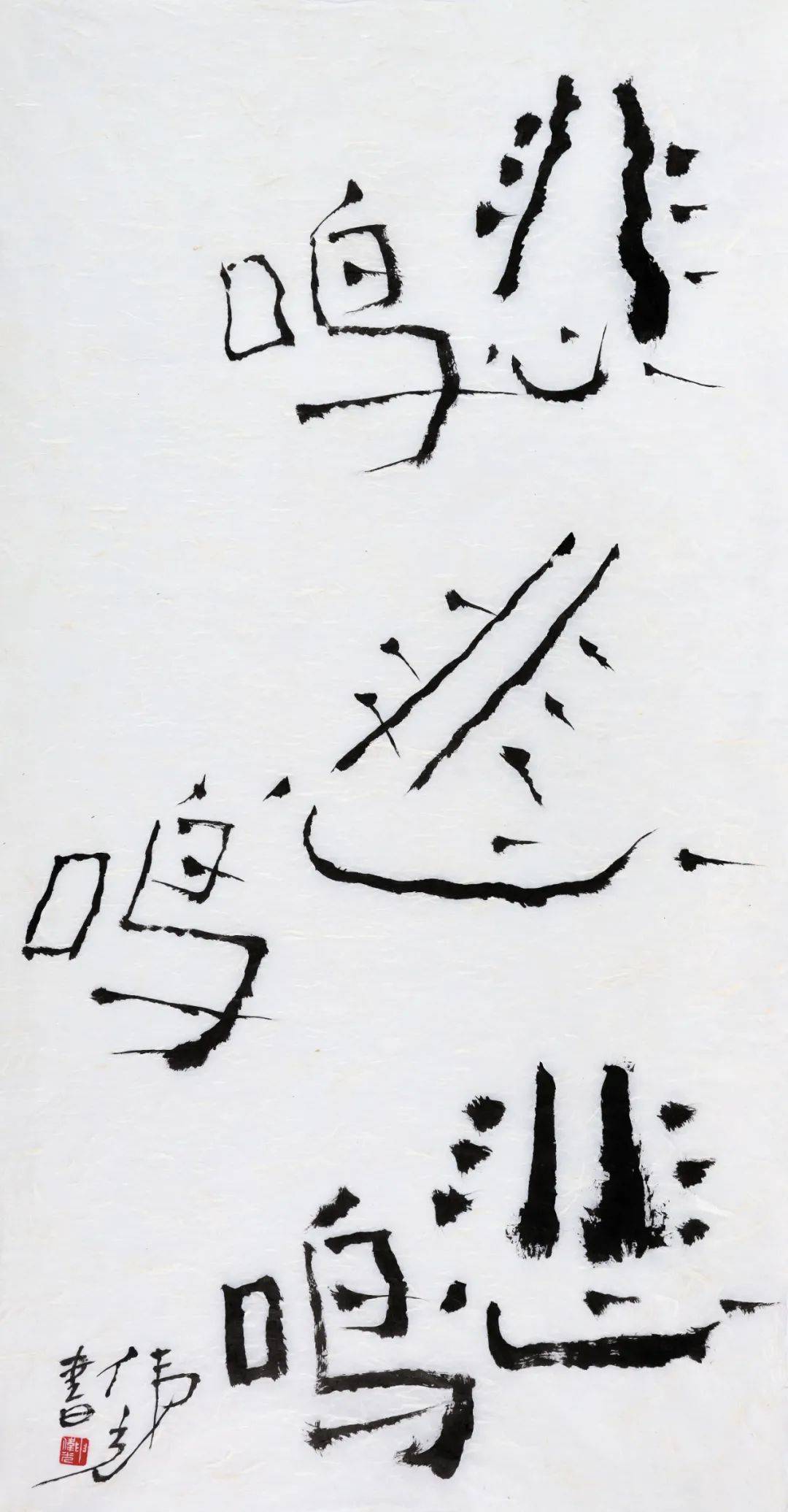
悲鸣 144.5cm×75cm 水墨纸本 2022
申伟光的书写分为两大类:一类叫“神圣性的书写”,或者叫“宗教性的书写”,“超验性的书写”。现在在申伟光美术馆展厅里面就有好几幅超大尺幅的作品(400cm×300cm),令人肃然起敬,仰之弥高。他最先有的是这一类书写。另外一类叫“普适性”的书写,是可以融入大众的书写、可以融入社会的书写,或者叫“世俗性”的书写。这两类书写在心态和形态上都有比较明显的区别,但在本质上,都是“艺道一体”的书写。“本”是一样的,但是形态上各不相同。
所以这些“重字”的书写,包括他的“独字”的书写,我总结为十六个字:“随线入观,随书入文,随体入相,随局入境”。核心和重点是“随线入观”的“线”,这个“线”是一篇“大文章”!它是中国书画艺术的“元语言”,亦是中国文人书画家千锤百炼的结晶,还是中西艺术的分水岭之一。书法说到底就是“线”的艺术,所以“线”的功能体现质量和品格,以及体色和形态的美丑、布局和谋篇的奇正、变化,等等,都决定了书写的水准,故而不可不慎之,不可不察之。
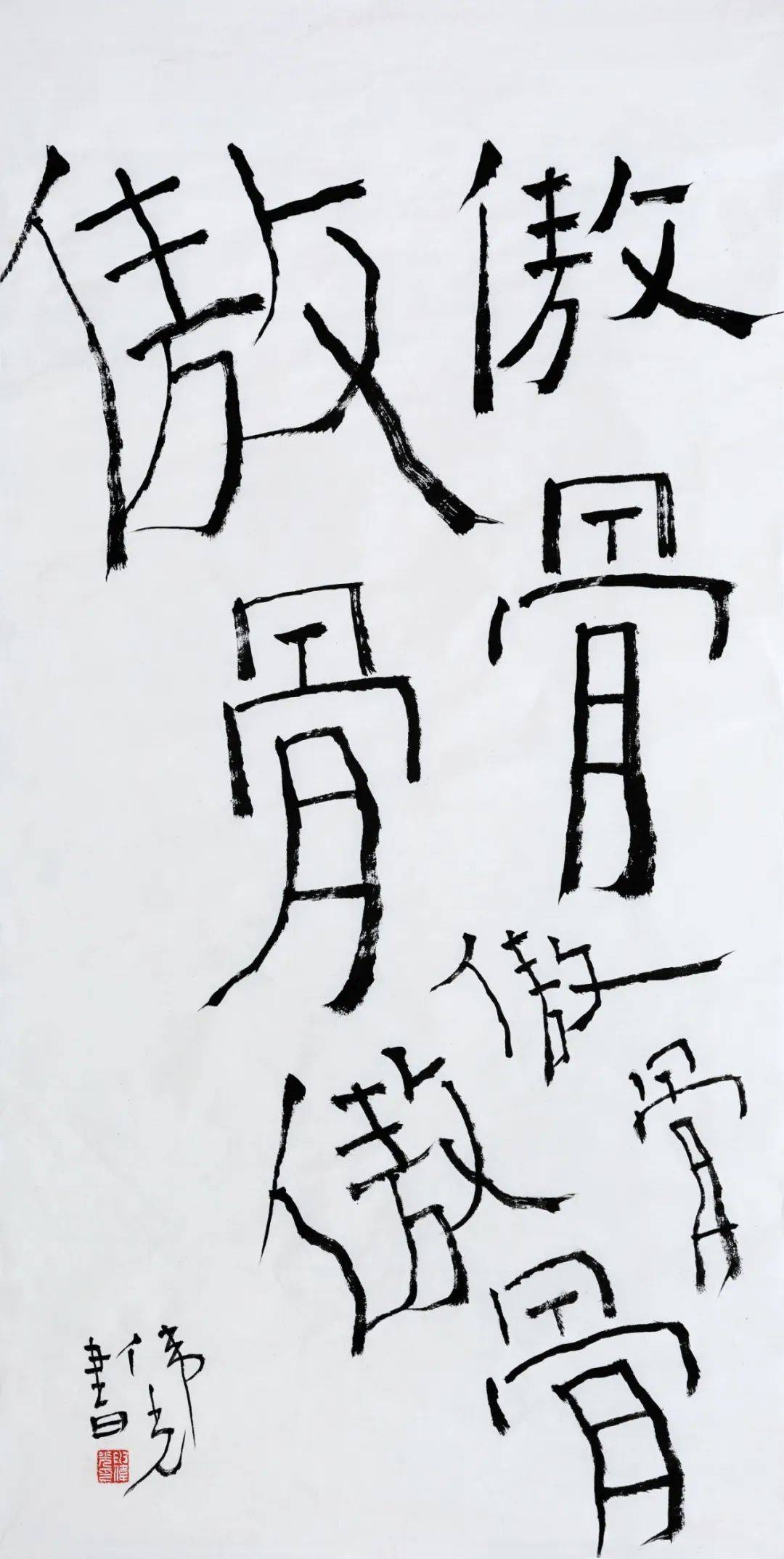
傲骨 137cm×69cm 水墨纸本 2023
一、“线”的功能:
申伟光的随线入观的“线”,怎么体会他的功能?根据申伟光自己的一些看法,我把它归纳为以下四点,第一,是心性和佛性的一种自然流露。申伟光有一句话是这样说的,“你如果把金刚菩提心的那种自然感受,通过书法的线条传达出来,那是一种什么感觉!那笔道一下来,就感觉是天地之间的一种能量!”提起笔来,就有心性和佛性,笔下自然流淌。
第二个功能,是生命本质的一种体验和印证。援引他自己说的,“通过书写线条,也可以体会到更多生命本质的东西。书法的线条同时又能传达出你对生活等等各方面的体验。”这是第二个功能。
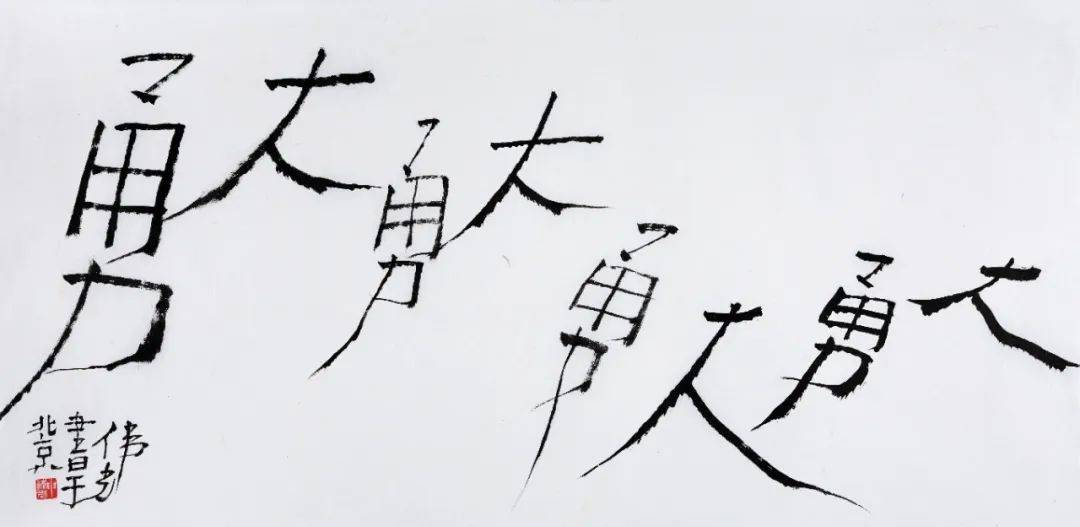
大勇 140cm×70cm 水墨纸本 2021
第三个功能,是体现一种强大的精神和人格的力量。这个话申伟光自己是这样说的,“你看有些字的用笔,写得非常有力量、有内涵,让人感觉到一种庄严感和静穆感,甚至还有一种永恒感!”我把他归纳成为第三个功能,是精神和人格的力量。
第四个功能,这个用线是沟通天地宇宙的一个中介。他是这样说的,“那个笔道一下来就感觉是天地之间的一种能量!”这个很明确的就是说在书写过程当中,他感受到了和天地宇宙之间的一种感应和互动,所以这是“线”的最高层次的一种功能体现。
以上这四个方面都在他的用线当中有所体现,而且体现得很不错,我们看到这些“重字书”的书写,最重要、最核心的是看“线”的生命力和能量感。
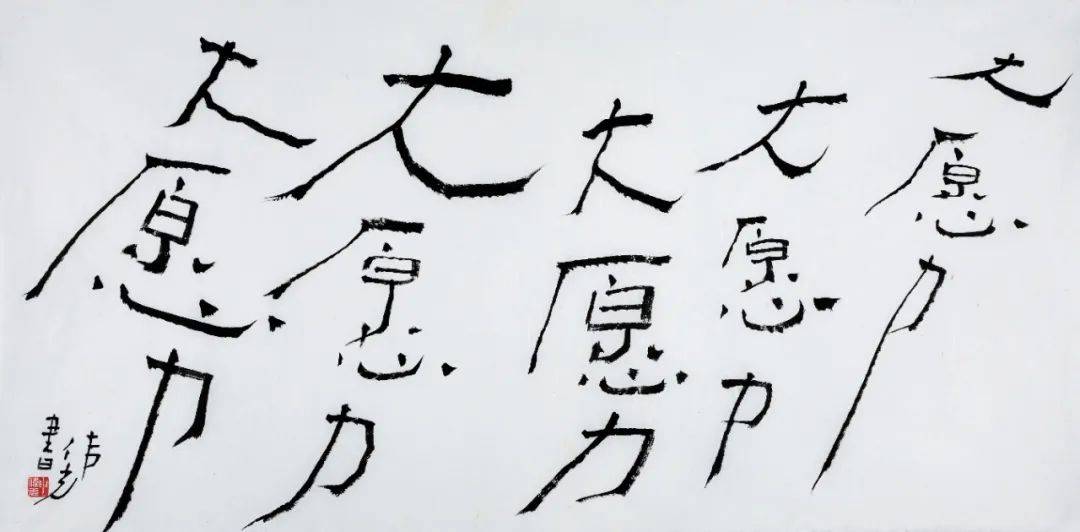
大愿力 141cm×69.5cm 水墨纸本 2021
二、申伟光用线的质量和品格:
用线的质量决定了品格,品格又反过来体现了质量,二者相辅相成、相得益彰。质量就是质地和体量,申伟光的线实际上从质量上来讲是外柔内刚,绵里藏针,圆润有力,气韵具足。体量可大可小,可粗可细,可长可短,随心任性。不刻意,不雕琢,自适自得。所以品格和品性的表达,使申伟光书写总体而言,单纯而古朴,格调高雅而苍润,这是支撑他“重字书写”的主梁。
我刚才说,中国书画家笔下的每一根线,都是他们长期苦修,千锤百炼的结晶,线也是中国书画家身份的证验,所以我觉得这一点和申伟光的书写、书法是有关系的。所以我觉得申伟光“重字书”的书写,尤其是他的用线,不仅是他作为一个佛家弟子的证验,更是他作为文化传人、文人身份的证验。
诚哉,千姿百态、源远流长的“中国线”,“重字书”的线!
2023年5月24日
于草履书斋
Conscious mind turns into calligraphy Writings on the page express compassion
——A conversation about Shen Weiguang’s calligraphy
Author: Chen Xiaoxin
When it comes to my relationship with Mr. Shen Weiguang, Shen Si and Shen Minghui (the three generations of the family), I must be a veteran. Shen Weiguang is from an artist with true temperament and a strong man from Northern China, to one of the most outstanding contemporary artists in China. Since 1990s, he has become a devout Buddhist and a lay Buddhist painter. I am a witness to this process. And then I watched Shen Si’s growth. When I first met Shen Si, he was three or four years old, and he grew up, married, had child, and followed in his father's footsteps. To understand the“Repeated Characters”Calligraphy, I specially read the Preface of Touring Exhibition of Shen Weiguang’s “Repeated Characters” Calligraphy written by Shen Si. I feel that Shen Weiguang finally has a successor to take over his career, and I am very happy. Finally, I witnessed the growth of Shen Minghui, from holding him in my arms until now he is 16 years old. He is also a staff member of Shen Weiguang Art Gallery, and is also engaged in Weiguang's career. I am very lucky to witness the growth and change of the three generations. It is indeed a very deep friendship. As an old friend, I am fully understanding of Wei Guang's career, and will do my best to support him, there is no doubt! So today, when Shen Si comes to me for writing a preface for this book, I am obliged to do so.
I
Shen Weiguang's writing is a kind of spiritual performance art in a special sense. It falls into two broad categories:
1.The act of writing Sutras in the religious sense:
For transcribing or repeatedly transcribing a whole piece or a whole volume of sutras and scriptures, some of the sutras are voluminous and have a vast number of words. This copying is not only the work of a half year, and it consumes strength, energy, mind and blood for years and years. Some even are transcribed with the writer’s own blood. The power of willingness is extraordinary, and even can touch the heaven and earth!
The religious, sacred, solemn, pure and ceremonial nature of the writing in the religious sense is the first. The artistry of writing is secondary. Regular script or the combination of regular script and official script is the main form of this calligraphy. It is neatly arranged and has a certain ornamental value and impact on the mind and body.
2.The other major part is the writings in the secular sense. Its content involves ancient poetry, slang, epigrams, aphorisms, proverbs and so on. This calligraphy is often legible, and it is filled of the spirit of compassion and the exhortative, beneficial humanistic feelings (The religious connotation has been relatively weakened). At the same time, the artistry of the writing has been strengthened and prominent, so it has the value of calligraphy art and history. It is worth deep research both for today and later generations.
I dictate a doggerel for everyone:
The conscious mind turns into calligraphy, and it shows the effort of cultivation in everyday.
The writings on the page express compassion, and the charm of calligraphy becomes intense.
The strokes are thin, crooked, curved and swerving, and the form appears in the formless.
I miss the people of virtue of the older generations in my old age, and I realize that Zen and calligraphy are connected.
In particular:
(1)The existence of Calligraphic Imagery: the strokes and structures have imagery, and Zen koans are hidden in them. It is very interesting. This is also one of the main bases for me toify his calligraphy works as "Zen Calligraphy". Shen Weiguang himself also said that he writes calligraphy as a painter. He said, “If you look at my calligraphy, you will feel a lot of pictographic meaning, which is the image thinking. I developed it, and made it more exaggerated. I made the imagery and the pictograms more intense.” (According to Shen Weiguang’s Conversations, p132). Ancient remarkable calligraphers also emphasized "Calligraphic Imagery", such as Su Dongpo, Huang Tingjian, Zheng Banqiao, as well as Hongyi, Feng Zikai in modern times,etc. Shen Weiguang makes it more abundant, extensive and exaggerated, and it becomes a remarkable feature of his own calligraphy. It is also a breakthrough in the morphological meaning of calligraphy.
(2)The unconventional writing is varied, informal and unique. It not only integrates regular, running, official and seal script, but also integrates the study of tablet inscription and rubbing. Once he told his students: “Some characters’ strokes are very powerful and meaningful, and they make people feel a sense of gravity and quiet, and even a sense of eternity. Some characters are written with great dexterity, and they are very beautiful, making you very relaxed and not persistent, but not simply easy. They contain a lot of things. Some other characters are very childish, very childlike and very straightforward, but contain a lot of things worth playing with.” (According to Shen Weiguang’s Conversations, p127) The above three kinds roughly summarize the characteristics of his calligraphy. In addition, what is more important and crucial is the attitude of writing. He believes that by writing the lines of the calligraphy, you can experience more of the essence of life. All of your energy condenses at the end of the pen. (According to Shen Weiguang’s Conversations, p192-193) He further emphasized, “If you convey the feeling of Vajra Bodhichitta through the lines of calligraphy……As soon as the strokes appear, it feels like a power between heaven and earth!” (According to Shen Weiguang’s Conversations, p193) What I feel in his individual works (such as "Compassion"慈悲Cibei, "True"真Zhen, etc.) is precisely such a power!
(3)The super-utilitarian mentality and the super-utilitarian writing possess each other and combine with each other, and have full feelings of helping the world.
Note: About Zen Calligraphy, I am thinking of Bada Shanren, Hongyi and Feng Zikai (There should be many more). Their calligraphy is unique, and much higher than ordinary calligraphers.
Ⅱ
The base of the “Repeated Characters” Calligraphy is Tao. Why do we need to write? What is the ultimate meaning of calligraphy? Only by establishing this base and reflecting this "Tao", can we talk about his "uniqueness" in artistic language. These unique artistic languages of Shen Weiguang are built on this base and attached to "Tao". So Shen Weiguang’s art is “Integration of Art and Tao”, “Integration of Calligraphy and Calligrapher”.
“Integration of Art and Tao” or “Integration of Calligraphy and Calligrapher” is the highest level of calligraphy. Nothing more! Shen Weiguang’s art is “Integration of Art and Tao”,“Integration of Calligraphy and Tao”and “Integration of Calligraphy and Calligrapher”. Why? Because Shen Weiguang’s every mind is “Living beings are infinite, I vow to liberate them all”, “Strengthen the energy of spirit”and “Art is the embodiment of the whole life”. Shen Weiguang emphasizes the "Self-nature", "Blank Essence" and "Buddha Nature" in his calligraphy, and these works show “Tao of calligraphy” and the base of calligraphy. So, Shen Weiguang’s “Repeated Characters” Calligraphy and other calligraphy works, are "new-style writing" in the sense of breaking through the traditional calligraphy. Therefore, to discuss Shen Weiguang's "new-style writing" from the perspective of traditional calligraphy will inevitably miss the point.
The “Repeated Characters” Calligraphy is a new writing, and it is from repeated chanting (the most important way to practice Pure Land Buddhism). Now I am also chanting "Namo Amituofo"(南无阿弥陀佛) every day, and this is “repeated chanting”. So, Shen Weiguang’s “Repeated Characters” Calligraphy originates from repeated chanting and becomes calligraphy.
Shen Weiguang's calligraphy is divided into two categories: one is called "sacred writing", or "religious writing", "transcendental writing". Now there are several oversized works in the exhibition hall of Shen Weiguang Art Gallery(400cm×300cm), which are highly admired and respected. He started with this kind of writing. Another type of calligraphy is universal and secular, and can be integrated into the public and society. These two types of calligraphy have obvious differences in both mentality and form, but in essence, both of them are the writing of "Integration of Art and Tao". Their bases are the same, but their forms are different.
Therefore, I summarize his “Repeated Characters” and “Single Character” Calligraphy as: “From the line to the observation, from the writing to the calligraphy, from the form to the essence, from the layout to the realm”. The core and focus is the “line” of “from the line to the observation”, and it is a “big article”! It is the "meta-language" of Chinese painting and calligraphy. It is also the crystallization of the great efforts of Chinese literati calligraphers and painters, and one of the watersheds of Chinese and Western art. After all, calligraphy is the art of “lines”, and the function of “line” reflects the quality and character, reflects the beauty and ugliness of color and form, reflects the change of layout and structure, etc. It determines the level of calligraphy, so it needs to be treated and researched with caution.
1.The function of “line”:
About the “line” of “from the line to the observation” in Shen Weiguang’s calligraphy, how do we understand its function? According to some of Shen Weiguang's own opinions, I summarize it into the following four points: First, it is a natural revelation of the self-nature and the Buddha nature. Shen Weiguang said, “If you convey the natural feeling of Vajra Bodhichitta through the lines of calligraphy, what a feeling it is! As soon as the strokes appear, it feels like a power between heaven and earth!” When you use the writing brush, the self-nature and Buddha nature flow naturally.
The second function of “line” is an experience and confirmation of the essence of life. As he himself said, "By writing lines, one can also experience more of the essence of life. The lines of calligraphy can also convey your experience of life and other aspects." This is the second function.
The third function of “line” is the embodiment of a strong spirit and personality power. As Shen Weiguang himself said, "Some characters’ strokes are very powerful and meaningful, and they make people feel a sense of gravity and quiet, and even a sense of eternity!” I summarize it as the third function, which is the power of spirit and personality.
The fourth function of “line” is an intermediary that connects heaven and earth in the universe. This is what he said, “As soon as the strokes appear, it feels like a power between heaven and earth!” It is clear that in the process of writing, he felt an interaction with the universe. So this is a function of the highest level of "line".
These four aspects are reflected very well in his use of lines. When we appreciate the "Repeated Characters" Calligraphy, the most important is to see the vitality and energy of the "line".
2.The quality and character of the use of lines by Shen Weiguang.
The quality of the use of lines determines the character, and the character reflects the quality in turn, and both complement each other. The quality is texture and size. Actually in terms of quality, Shen Weiguang's “line” is like an iron fist in a velvet glove and a needle hidden in silk floss. It is mellow, powerful, and full of spirit. The size can be large or small, thick or thin, long or short, and it’s capricious. It is not deliberate, not sculpted, and self-satisfied. The expression of character makes Shen Weiguang’s calligraphy quality simple and plain, elegant and moist. This is the main beam which supports his "Repeated Characters" Calligraphy.
I just said, every line created by Chinese calligrapher is the crystallization of their great efforts, and a verification of their identity. So I think this is related with Shen Weiguang’s writing and calligraphy. So, I think that Shen Weiguang’s “Repeated Characters” Calligraphy, especially the use of the lines, is not only the testimony of his identity as a Buddhist disciple, but also a cultural inheritor and literati.
The “Chinese Line” and the lines in the “Repeated Characters” Calligraphy are so various, and have a long history. How sincere it is!
On May 24th, 2023.
In Caolv Study.
作品欣赏
你好 144cm×76cm 水墨纸本 2023
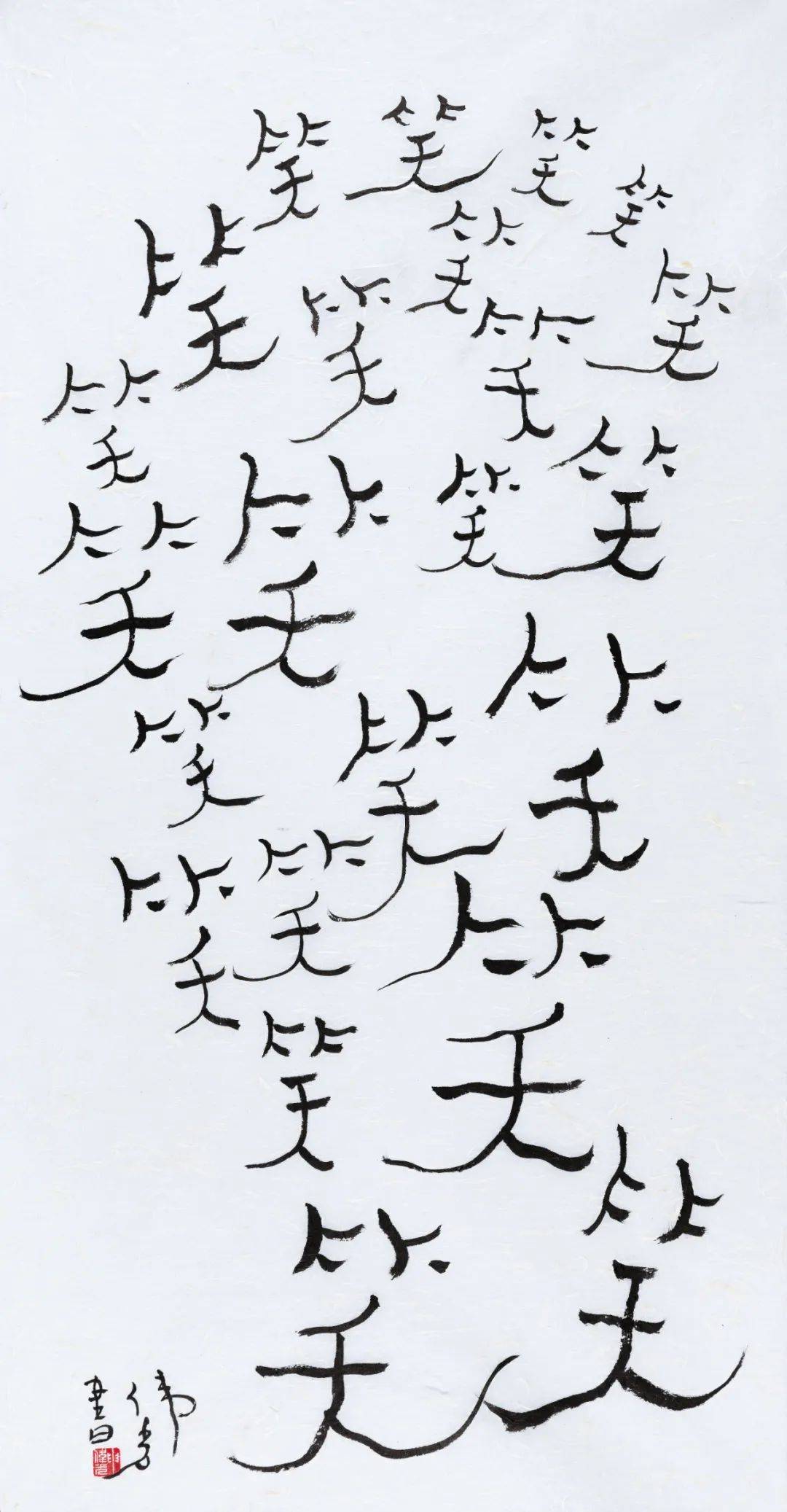
笑 144cm×76cm 水墨纸本 2021

累 140cm×70cm 水墨纸本 2021
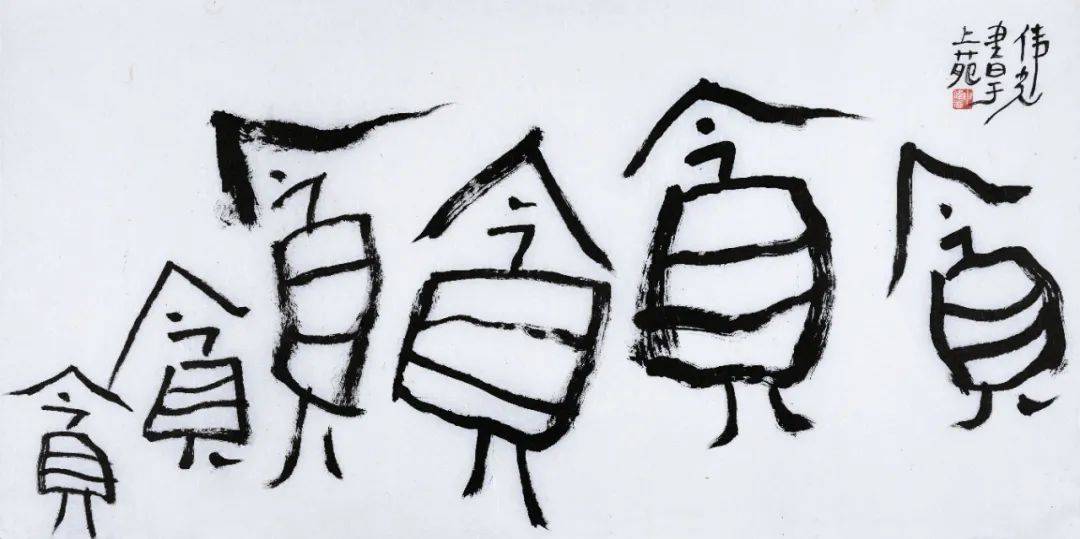
贪 141cm×70cm 水墨纸本 2020
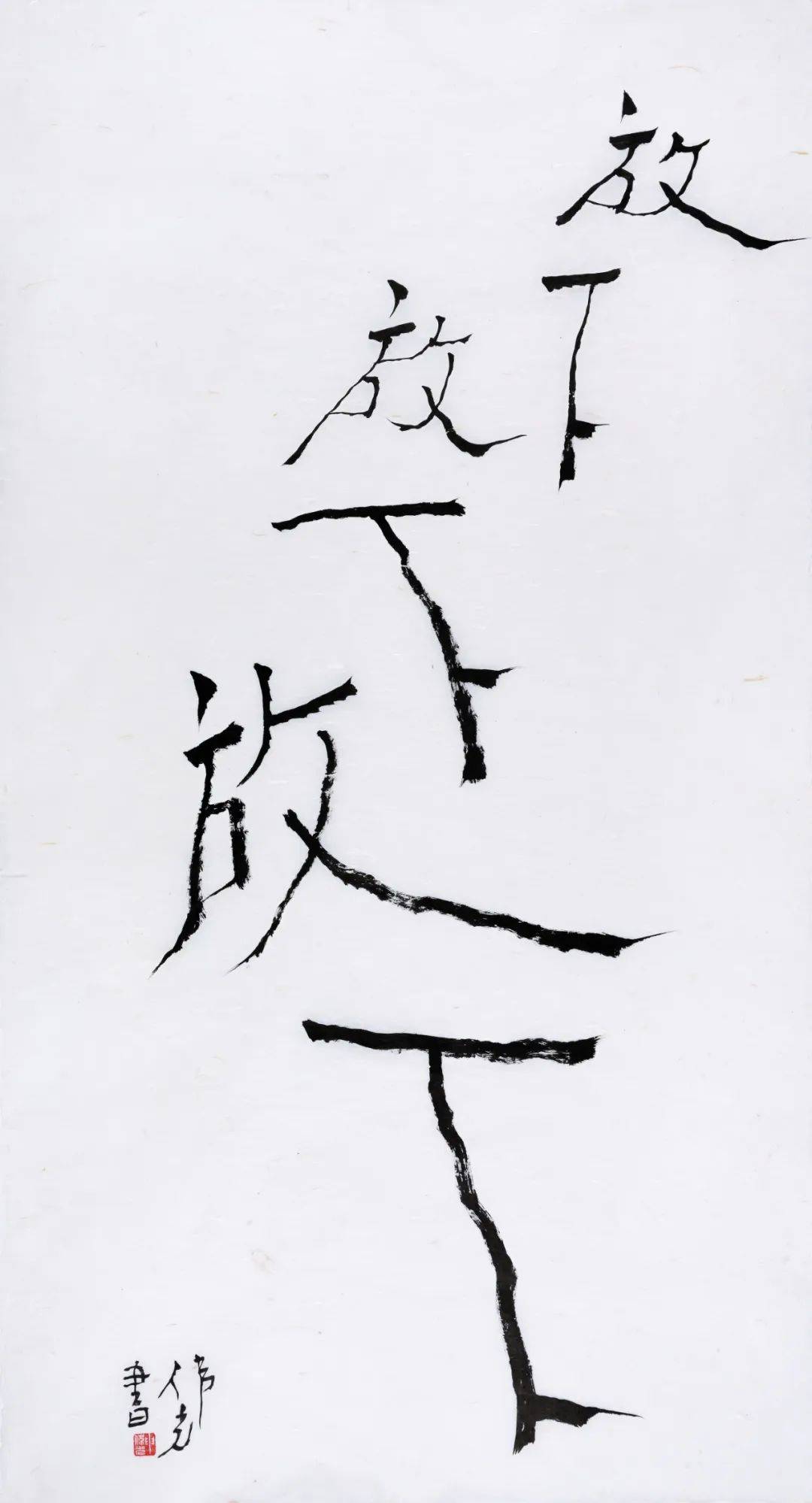
放下 180cm×97cm 水墨纸本 2021

了生死 140cm×70cm 水墨纸本 2023

无挂碍 138cm×70cm 水墨纸本 2021
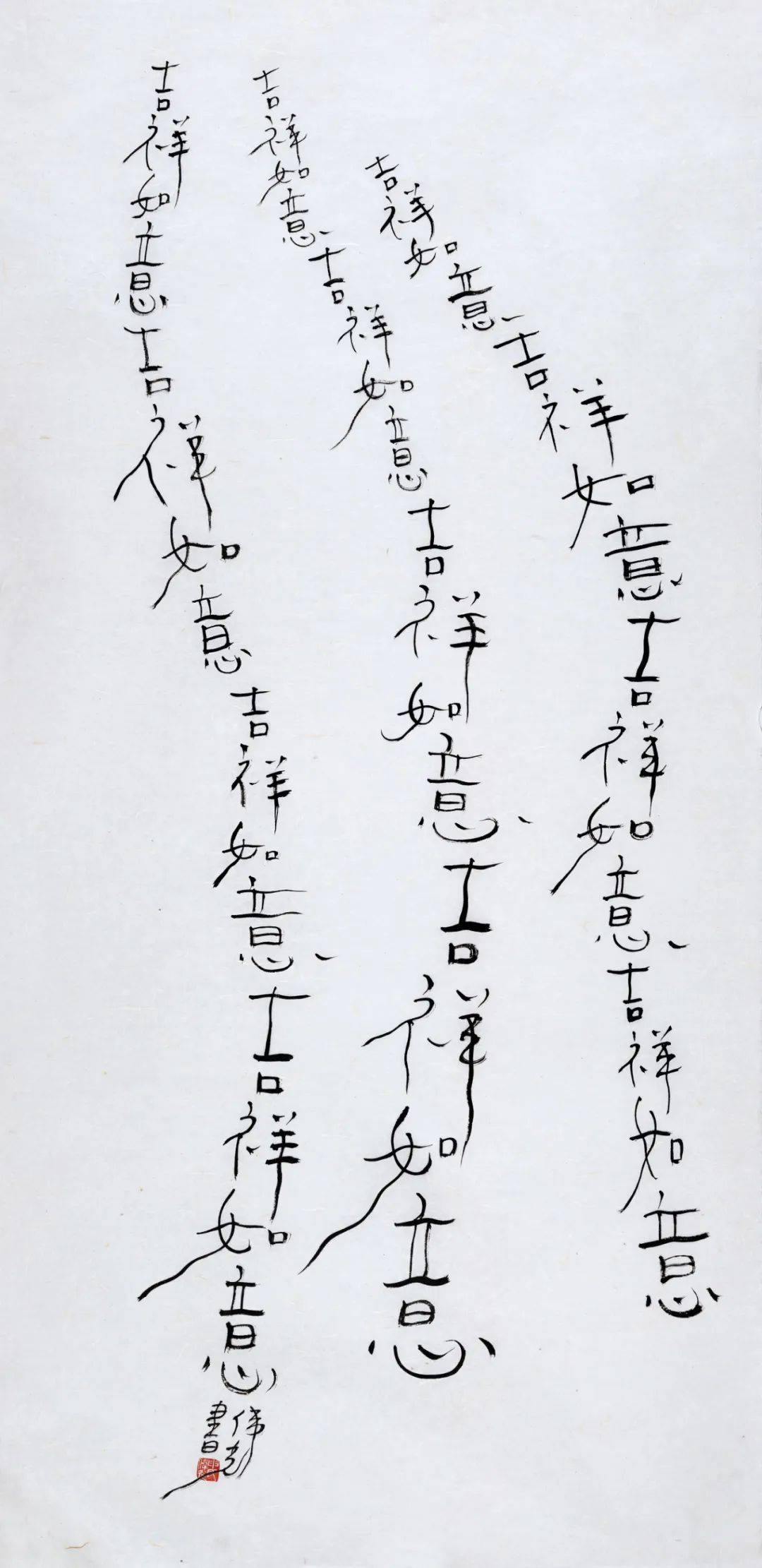
吉祥如意 140cm×69.5cm 水墨纸本 2021

乐 178cm×97cm 水墨纸本 2023
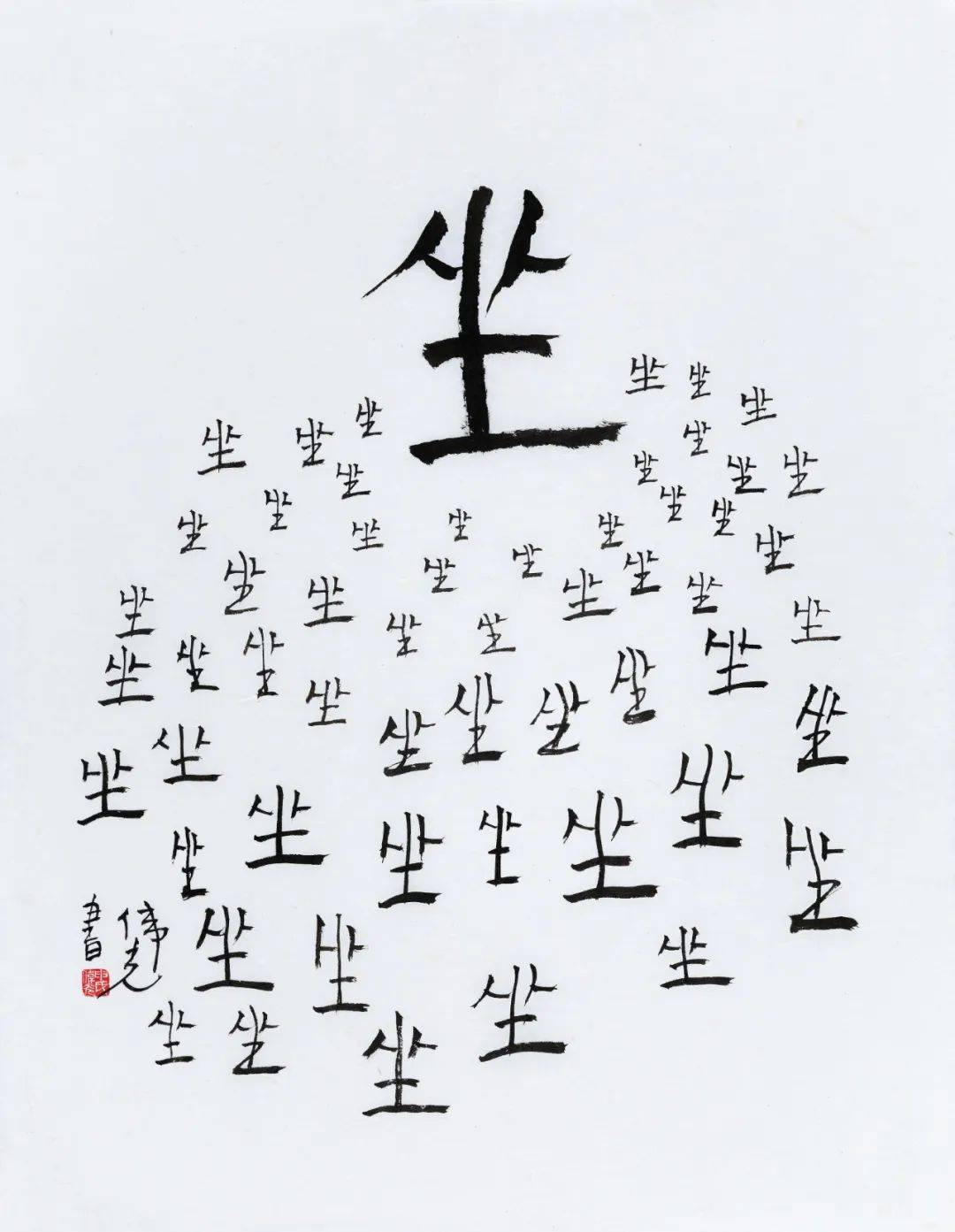
坐 89cm×70cm 水墨纸本 2023
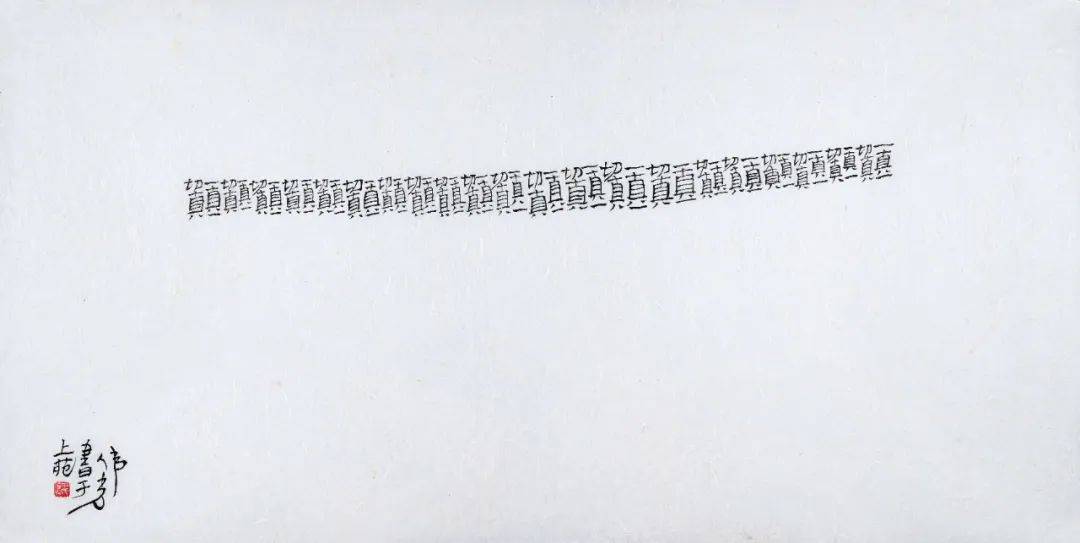
一真一切真 144cm×76cm 水墨纸本 2023

心作心是 140cm×70cm 水墨纸本 2021

一花一世界 180.5cm×97cm 水墨纸本 2021





